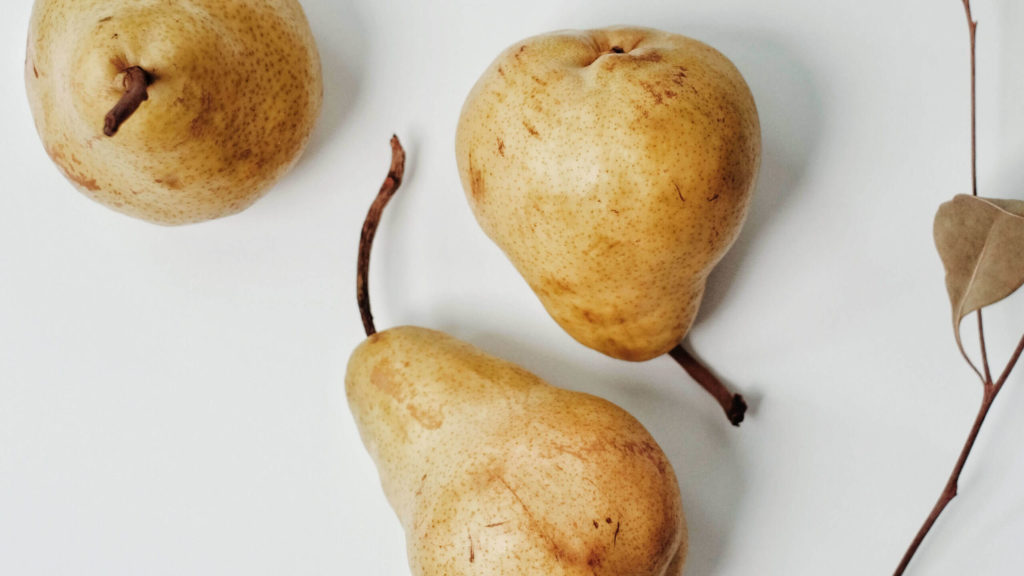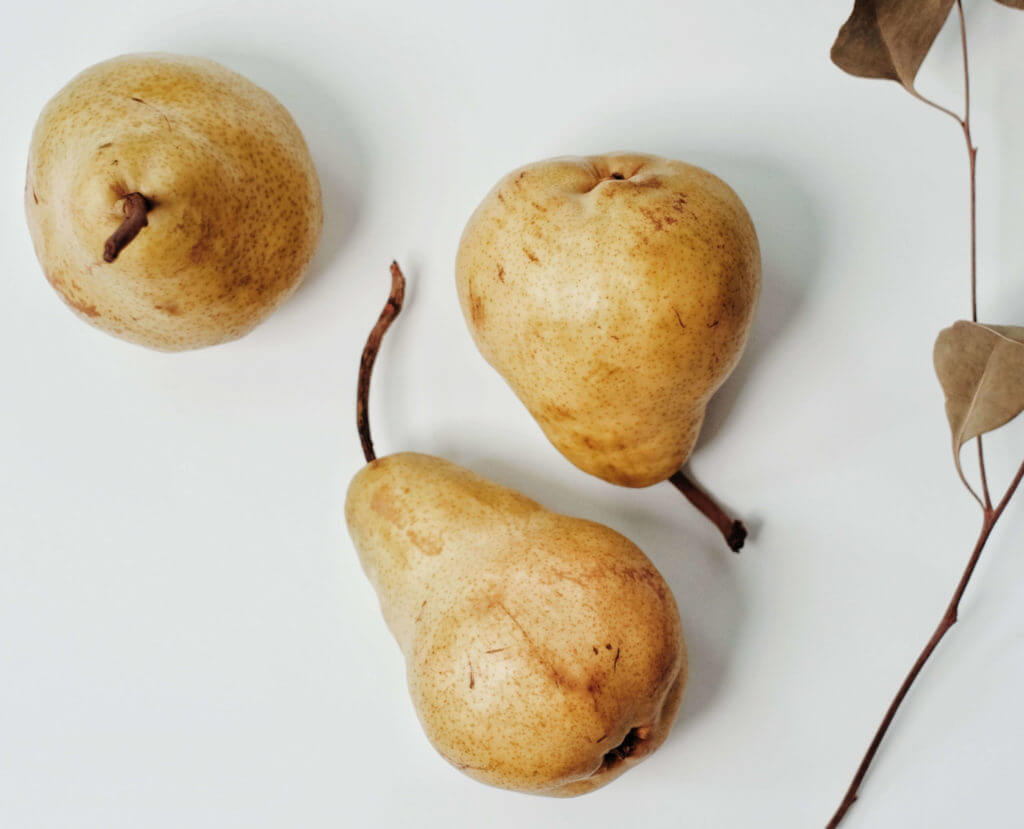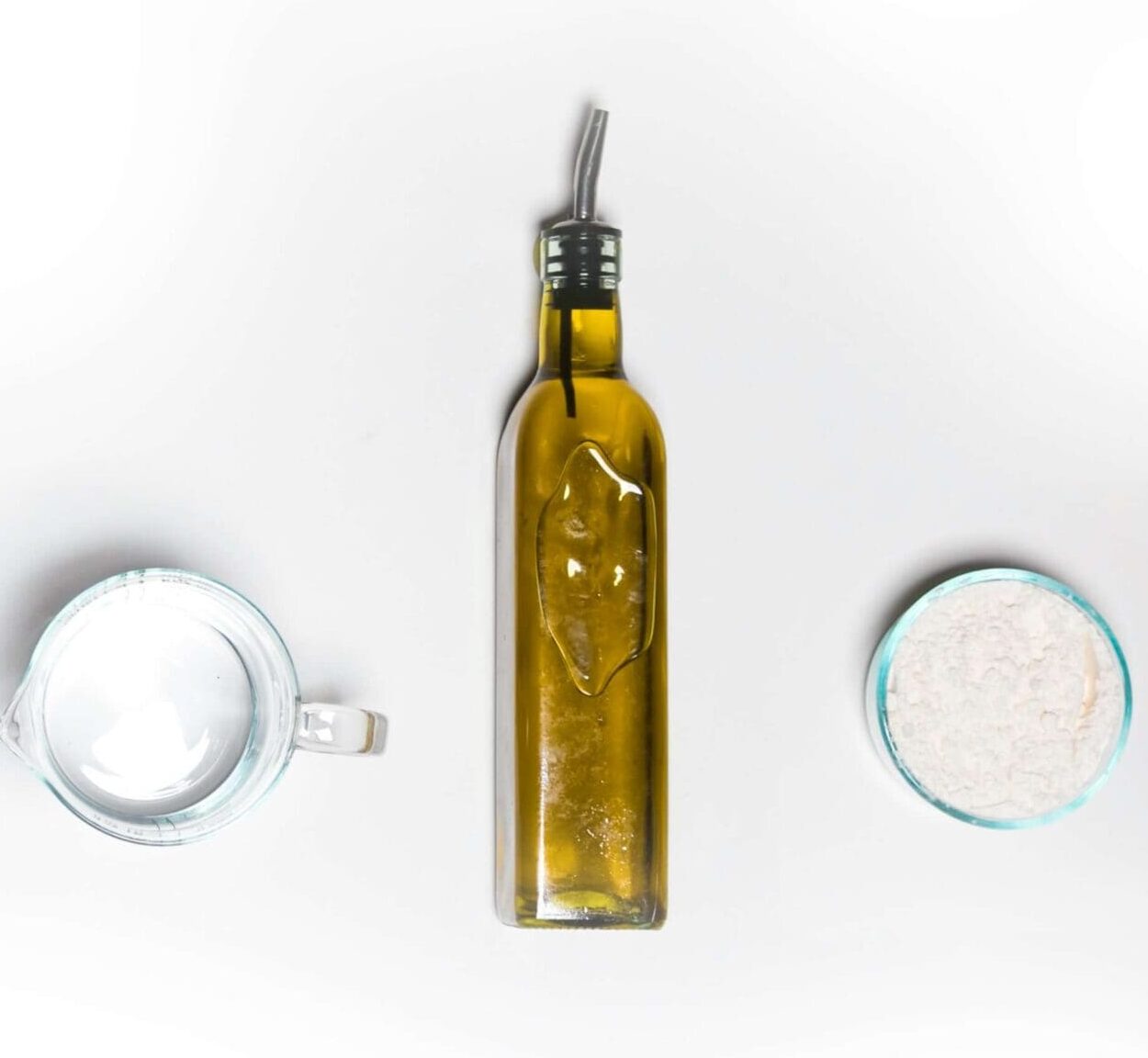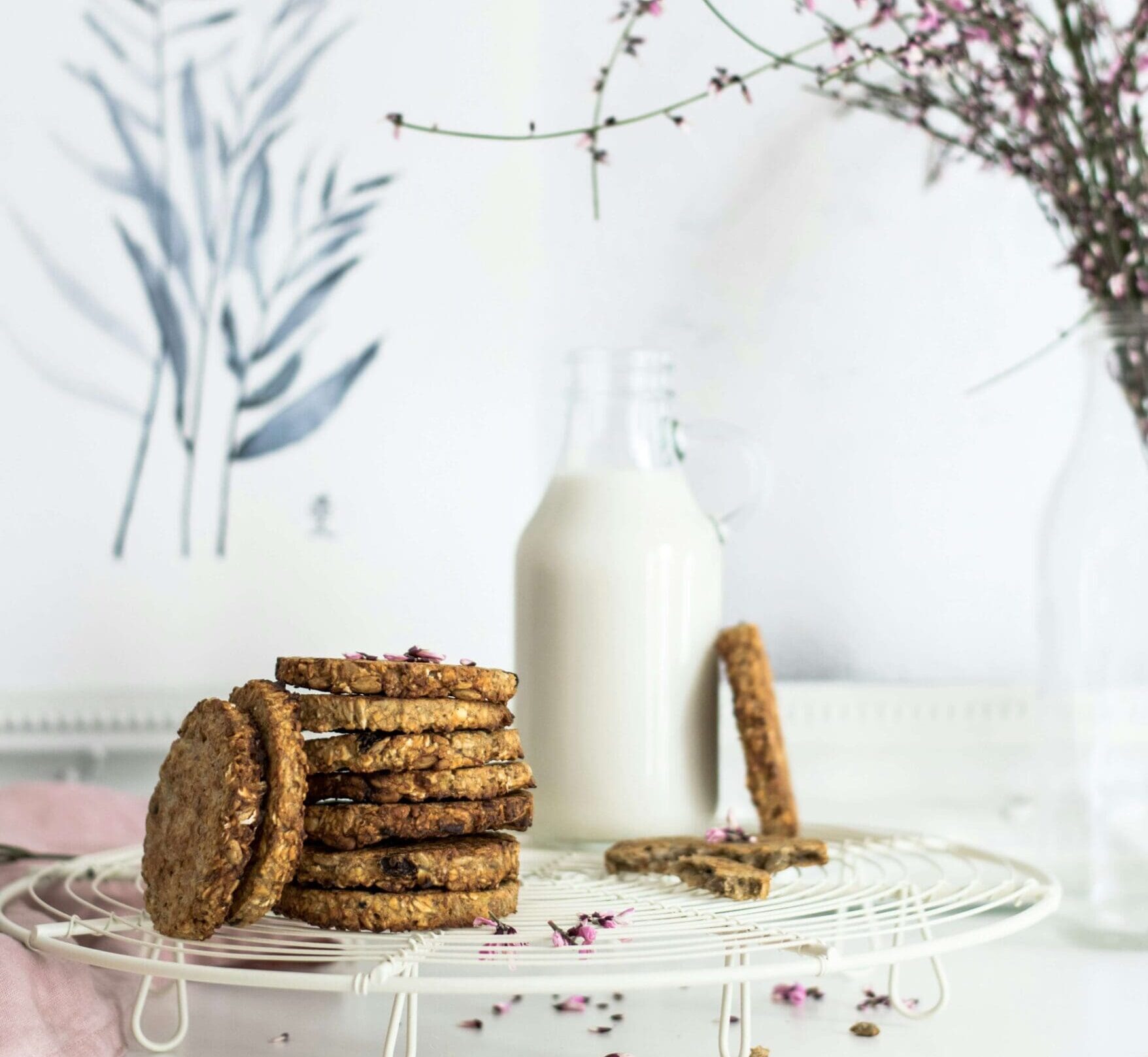
Hello friends! According to the AICR, 42% of cancer cases are linked with modifiable risk factors. This means that there are things we can do right now to reduce the risk of cancer. Woohoo!
Now, let me back up for a moment. This does not mean that if you have cancer, it is your fault. Cancer is horrible, unfair, and complex. Survivors can do without the guilt-trip and instead learn how to keep their bodies strong so that they have more energy and are better equipped to handle stress from treatments and everything else life throws at them!
1. Eat your fruits and vegetables
I know, I know. Typical for a dietitian to tell people to eat their fruits and vegetables, but there is a reason, I promise!
You see, plants are filled with fiber, vitamins, minerals, and phytochemicals. These things all play an important role in keeping our bodies healthy! Having a variety of types and colors of fruits and vegetables means we are getting the full range of benefits! For example, blue and purple foods (blueberries, purple cabbage) contain phytonutrients called anthocyanins which helps with healthy aging and memory. Red foods, such as bell pepper and tomatoes, contain lycopene which is protective against heart disease.
Fruits and vegetables are also packed with antioxidants, such as vitamin C, which have a protective effect in the body and help to neutralize harmful compounds known as free radicals. As we age, these free radicals can build up, and cause cell damage which is associated with chronic diseases such as heart disease, diabetes, and cancer.
General guidelines are to include 5 cups (or servings) of fruits and vegetables a day. A technique that helps the more visual learner is to fill roughly half of their plate with fruits and vegetables and include either one with a snack, especially if you did not get any at a meal.
Where to start?
It can be challenging to increase your fruits and vegetables, but you are also not expected to meet that goal of 5 cups a day immediately. It may actually be more helpful to gradually increase your daily amount of fiber so that your gut has some time to adjust.
If you currently are not eating any fruits or vegetables, try to add one a day. If you are currently consuming 3 servings a day, maybe add one or two servings here and there. Be kind to yourself and remember that small changes add up over time. You got this!
Although fresh foods are great, frozen/dried/canned options can also help you meet your needs, while saving time and/or money. Just look for low sodium options and fruit canned in its own juice to cut back on sodium and added sugar.
Methods to Increase Fruits/Vegetables
- Blend up a smoothie for a meal or snack. You can use fruits, vegetables, or both!
- Get creative with different mix-ins:
- Cocoa powder
- Greek yogurt
- Peanut butter
- Chia seeds
- Ground flax meal
- Coconut
- Lemon juice
- Ginger
- Cinnamon
- Turmeric
- Get creative with different mix-ins:
- Snack on veggie sticks with dip! Who says you have to be a toddler to enjoy some ants on a log (celery with peanut butter and raisins) or baby carrots with ranch or hummus.
- Add a bag of frozen peas/corn/broccoli/mixed vegetables to pastas, soups, curries, stir fries, and more!
- Use fruit to sweeten your hot/cold cereal or yogurt.
- Try fruit as a toast-topper along with a creamy nut-butter spread.
- Munch on a salad for lunch or as a side.
- Add tomatoes, lettuce, and onion to your burger, taco, or sandwich!
- Try different methods of preparation! Try baked apples, air-fried Brussels sprouts, roasted broccoli, and creamy blended vegetable soups.
- Add a bag of coleslaw mix to stir fries, salads, and soups for no fuss nutrition!
2. Remove Alcohol
Unfortunately, alcohol increases cancer risk. Wine, beer, and spirits ALL turn into acetaldehyde when broken down in the body which can damage our cell’s DNA and turn them into cancer. This is definitely something we want to avoid. Acetaldehyde also interferes with the absorption of nutrients that would otherwise be used to repair damage and keep your cells healthy, such as Vitamins A, B, C, D, and E.
Alcohol increases risk for 6 different types of cancer:
- Breast
- Esophageal
- Liver
- Stomach
- Oral (technically mouth, larynx and pharynx cancers)
“Wait, but what about red wine? For heart health?”
This is commonly used as a justification for alcohol consumption, but it is a misleading claim. Resveratrol, the compound found in red wine, may have a slightly protective effect, but the risks outweigh the potential benefit. Besides, you can also get this powerful phytonutrient from eating delicious grapes, blueberries, cocoa, pistachios, and peanuts!
How much should I drink to reduce risk?
Zero, zilch, nada drinks per day are recommended for cancer prevention. Having said that, it is each individual’s choice to decide whether or not they decide to incorporate alcohol in their life. If you choose to consume alcohol, I strongly recommend you do so in moderation and avoid going over 1 drink per day for women and 2 drinks per day for men.
Do not try to save up your drinks to binge drink on the weekend. Rather spread your drinks out throughout the week so that your body is not having to process a large amount of alcohol in one sitting.
Finding Alternatives
Now I know that alcohol is a very effective stress reliever and a large part of socializing for some people. If you are moving towards an alcohol-free lifestyle, try out different ways to wind down at the end of the day such as drinking hot tea, reading a chapter of a book, or going for a walk. Invite friends to sober activities such as trying out a new restaurant, cookie decorating, joining a fitness class, going on a hiking trip, or starting a book-club.
3. Move more!
Regular movement is vital for overall health and wellness. It helps with blood sugar balance, heart health, ability to carry out activities of daily living, sleep, and regular bowel habits (good-bye constipation). Specifically for cancer survivors, it can help reduce severity of side effects, increase circulation, and boost morale as you go through treatment.
Most Americans, especially office workers, can easily spend more than half of their waking hours sitting. To decrease risk of several chronic diseases, it is important to cut back on sedentary activities and increase how often you move. If physical activity is new to you, start small and try to get a total of 30 minutes per day.
Remember to look for activities that you enjoy! If you are looking forward to your exercise routine, you will be more likely to stick to it! The general recommendation is to get 150 minutes of moderate physical activity or 75 minutes of vigorous physical activity per week. Now, this can be broken down into 30 minutes for 5 days a week or you can get it all on the weekend if you struggle to find time during the week.
Ways to move more:
- Go on a brisk walk
- Work in a garden
- Do some housework.
- Play with your kids/grandkids
- Swim
- Hike
- Lift weights
- Practice yoga
- Have a dance party (solo or follow a YouTube video)
- Go for a jog or run
- Park further from the grocery store/work to get some extra steps
- Walk to your coworker’s desk rather than email (this can also improve work relationships)
- Take the stairs in a building rather than the elevator
Increasing Intensity
As you get stronger, increase the intensity or duration of your workouts! Run faster/longer. Try more challenging stretches or yoga positions, and/or lift heavier weights. Do not do too much too quickly. Allow your body time to adjust and recover as you increase your activity level. Even on treatment days when you are feeling low energy, engaging in low-intensity movement such as walking can actually help improve energy levels.
Remember to give yourself grace, especially if you were very active before treatment. Your body is going through so much, and it may take some time to build your strength back up to where it was. Take it one day at a time and aim for progress over perfection. Get pumped to become your strongest self!
4. Remove tobacco products
It is well known that smoking increases the risk of lung cancer, but did you know it also increases risk for 11 other types of cancer? According to the CDC, approximately 4 out of 10 new cancer diagnoses are associated with tobacco use.
Cancers Linked with Tobacco Use
- Mouth and throat
- Voice box
- Acute Myeloid Leukemia
- Kidney
- Uterine cervix
- Urinary bladder
- Esophagus
- Lung, bronchus, and trachea (airways)
- Liver
- Stomach
- Pancreas
- Colon and rectum
Although it is best to never start, quitting at any age will help reduce risk. Ask your doctor for assistance with quitting, and if you do not use tobacco/nicotine products, encourage loved ones to quit or avoid starting. Even secondhand smoke can increase cancer risk.
“What about E-cigarettes?”
Electronic cigarettes do not contain tobacco, but instead, they contain a liquid form of nicotine that is heated up and inhaled along with other flavorings and components. Less nicotine is inhaled overall compared with a normal cigarette. Traditionally, they have been used to assist individuals in their journey to quit smoking, however, over the last few years, they have gained popularity among adolescents and young adults.
Although they do not contain tobacco, they are not without risks. E-cigarettes can contain formaldehyde, acetaldehyde, and heavy metals such as cadmium and lead. Data from the National Health and Nutrition Examination Survey (NHANES) indicates that those who smoked e-cigarettes had an increased risk of developing cancer at a younger age.
Use of e-cigarettes can also cause individuals, who otherwise never would have started smoking, to become addicted to nicotine. For those who are trying to quit traditional smoking, it may be more helpful to try a method of nicotine replacement that does not have the same look and feel as cigarette smoking.
Come back next week to see 8 Ways to Reduce Cancer Risk Part 2!
Follow me on IG as I share new content and tons of tips in my stories to get you more support!
Want more food lists of foods that reduce cancer risk, recipes that include those amazing foods and dozens of cancer prevention trainings to get started on learning how to reduce cancer risk with simple strategies? Click here to check out my shop!
References
- Islami F, Goding Sauer A, Miller KD, et al. Proportion and number of cancer cases and deaths attributable to potentially modifiable risk factors in the United States. CA Cancer J Clin. 2018;68(1):31-54. doi:10.3322/caac.21440
- Hair R, Sakaki JR, Chun OK. Anthocyanins, microbiome and health benefits in aging. Molecules. 2021;26(3):537. doi:10.3390/molecules26030537
- Khan UM, Sevindik M, Zarrabi A, et al. Lycopene: Food sources, biological activities, and human health benefits. Oxid Med Cell Longev. 2021;2021:1-10. doi:10.1155/2021/2713511
- Cancer and tobacco use – vital signs – CDC. Centers for Disease Control and Prevention. https://www.cdc.gov/vitalsigns/cancerandtobacco/index.html. Updated August 2019. Accessed January 6, 2023.
- Potter M. Facts about electronic cigarettes. Johns Hopkins Kimmel Cancer Center. https://www.hopkinsmedicine.org/kimmel_cancer_center/cancers_we_treat/lung_cancer_program/ecigarette_facts.html. Accessed January 6, 2023.
This blog is not intended as medical nutrition therapy, medical advice, or diagnosis and should in no way replace consultation or recommendations from your medical professional.



